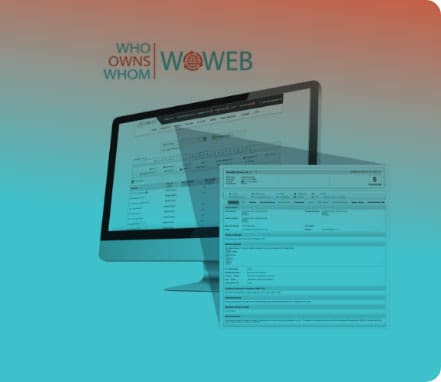Report Coverage
The Tanzanian Construction report focuses on current conditions, developments in the sector, the key drivers and the challenges that the industry faces. Profiles for 32 companies active in the sector are provided. Included are Chinese companies such as China Civil Engineering Construction Corporation, China Communications Construction Company, China Merchants Port Holdings Company, China Railway Group and China Wu Yi Company Ltd which are proving to be particularly competitive, especially in the civil construction market. Also profiled is Estim Construction Company Ltd which has subsidiaries in Mozambique and Zambia but whose headquarters are based in Tanzania. Alvic Builders (Tanzania) Ltd is another company with headquarters in Tanzania which undertakes projects throughout Africa.
Introduction
This report examines the construction industry and infrastructure development in the United Republic of Tanzania. As an industry with linkages to all sectors of the economy, the construction sector performs a pivotal role in Tanzania, as well as across the East African trade bloc. The roll-out of major public infrastructure projects across Tanzania and beyond its borders continues to support the rapid expansion of the construction sector, which currently contributes more than US$7bn to Tanzania’s annual GDP. With annual GDP growth averaging 7% over the past five years, Tanzania is ranked among the 20 fastest-growing economies in the world.
Strengths
• High levels of construction activity have supported Tanzania’s high-growth economic environment.
• Public-Private Partnerships are encouraged.
• The construction sector provides employment opportunities for unskilled and semi-skilled workers, as well as tradesmen and skilled professionals.
• The Tanzanian construction industry is a key driver of socio-economic development, providing shelter, basic services, transport networks and other infrastructure.
Weaknesses
• Enforcement of regulations is inconsistent.
• It is frequently difficult to procure construction materials and equipment locally and contractors are highly reliant on imported goods.
• Quality control is inadequate.
• Technology transfer remains weak.
• There is a shortage of skilled labour, workmanship is generally poor and productivity is low.
Opportunities
• Development of transport corridors and ancillary infrastructure in support of Tanzania’s role as a trade conduit for the integrated East African Community (EAC) trade bloc.
• Market demand for low-cost, energy-efficient housing, creates opportunities for new innovations and product lines.
• Renewable energy projects are increasingly attracting greater investment.
• Rising urbanisation presents building and construction opportunities in the form of new satellite cities.
• The emerging middle class is driving demand for infrastructure across a multitude of sectors.
• The National Development Plan outlined in Vision 2025 prioritises the construction of infrastructure, including the establishment of industrial development zones, to support the country’s economic transition.
Threats
• Corruption and tender fraud.
• External geopolitical threats and global macroeconomic pressures could result in lower levels of investment.
• Funding shortfalls and delays in the implementation of infrastructure projects.
• The climate of policy and regulatory uncertainty, which threatens to undermine investment.
Outlook
Since his election to office in December 2015, President John Magufuli has taken a hard line on corruption and political activism. While stakeholders have praised his commitment to tackle the scourge of corruption, concern has been expressed about his crackdown on political dissent. Recent policy reforms introduced by the Magufuli administration, coupled with reductions in government expenditure, have received a mixed response, with some commentators warning that uncertainty surrounding the government’s new policy direction could undermine foreign investment. Stakeholders say that weaker FDI inflows would impede construction activities and result in further projects delays. Notwithstanding downside risks to economic expansion, Tanzania is expected to sustain an average annual GDP growth rate of around 7% over the medium-term. With the frontier economy serving as a trade conduit for its land-locked neighbours, the development of transport corridors remains a strategic imperative. Stakeholders anticipate that infrastructure projects supporting the integration of the East African Community (EAC) trade bloc will be prioritised, with a particular focus on the development of ports, roads and railway lines.
Full Report
R 1 900.00(ZAR) estimated $113.97 (USD)*
Industry Landscape
R 1 330.00(ZAR) estimated $ 79.78 (USD)*
Historical Reports
The Construction Industry in Tanzania 2015-10-30
R 1 900.00(ZAR) estimated $113.97 (USD)*
View Report Add to CartThe Construction Industry in Tanzania 2015-05-25
R 1 900.00(ZAR) estimated $113.97 (USD)*
View Report Add to CartThe Construction Industry in Tanzania 2014-11-26
R 1 900.00(ZAR) estimated $113.97 (USD)*
View Report Add to CartTable of Contents
[ Close ]| PAGE | ||
|---|---|---|
| 1. | INTRODUCTION | 1 |
| 2. | COUNTRY INFORMATION | 1 |
| 2.1. | Geographic Position | 2 |
| 3. | DESCRIPTION OF THE INDUSTRY | 4 |
| 3.1. | Industry Value Chain | 6 |
| 4. | SIZE OF THE INDUSTRY | 7 |
| 5. | STATE OF THE INDUSTRY | 15 |
| 5.1. | Local | 15 |
| 5.1.1. | Corporate Actions | 26 |
| 5.1.2. | Regulations and Government Policies | 27 |
| 5.2. | Continental | 30 |
| 5.3. | International | 34 |
| 6. | INFLUENCING FACTORS | 36 |
| 6.1. | Economic Environment | 36 |
| 6.2. | Investment in Infrastructure | 36 |
| 6.3. | Corruption | 38 |
| 6.4. | Input Costs | 38 |
| 6.5. | Cyclicality | 39 |
| 6.6. | Health and Safety Concerns | 39 |
| 6.7. | Technology, Research and Development (R&D) and Innovation | 39 |
| 6.8. | Labour | 41 |
| 6.9. | Environmental Concerns | 42 |
| 7. | COMPETITION | 43 |
| 7.1. | Barriers to Entry | 45 |
| 7.2. | Public Procurement and the Tendering Process | 45 |
| 8. | SWOT ANALYSIS | 46 |
| 9. | OUTLOOK | 47 |
| 10. | INDUSTRY ASSOCIATIONS | 47 |
| 11. | REFERENCES | 48 |
| 11.1. | Publications | 48 |
| 11.2. | Websites | 49 |
| APPENDIX 1 | 51 | |
| The Global Competitiveness Index 2017-2018: Tanzania | 51 | |
| COMPANY PROFILES | 52 | |
| ADVENT CONSTRUCTION LTD | 52 | |
| ALVIC BUILDERS TANZANIA LTD | 54 | |
| ATIGH BUILDING CONSTRUCTION COMPANY LTD | 56 | |
| ATLAS AFRICAN INDUSTRIES LTD | 57 | |
| AURECON SOUTH AFRICA (PTY) LTD | 61 | |
| BAM INTERNATIONAL BV | 66 | |
| CHINA CIVIL ENGINEERING CONSTRUCTION CORPORATION | 68 | |
| CHINA COMMUNICATIONS CONSTRUCTION COMPANY LTD | 70 | |
| CHINA MERCHANTS PORT HOLDINGS COMPANY LTD | 74 | |
| CHINA RAILWAY GROUP LTD | 76 | |
| CHINA WU YI COMPANY LTD | 81 | |
| COWI TANZANIA LTD | 84 | |
| DEL MONTE (TANZANIA) LTD | 86 | |
| ESTIM CONSTRUCTION COMPANY LTD | 87 | |
| FABEC INVESTMENT LTD | 89 | |
| FRANKIPILE INTERNATIONAL PROJECTS LTD | 91 | |
| GIS ENGINEERING & ENVIRONMENTAL SERVICE LTD | 93 | |
| GS POWER INSTALLATIONS (PTY) LTD | 95 | |
| HEMATEC INVESTMENT LTD | 96 | |
| HOLTAN EAST AFRICA LTD | 98 | |
| ITALFRAME LTD | 100 | |
| JFM CONSTRUCTION LTD | 102 | |
| KERAI CONSTRUCTION LTD | 103 | |
| MHM GENERAL SUPPLY LTD | 104 | |
| NORPLAN TANZANIA LTD | 105 | |
| PMG GROUP (TANZANIA) LTD | 106 | |
| PREMIER ELECTRIC CONTRACTORS | 108 | |
| SALEM CONSTRUCTION LTD | 109 | |
| SKOL BUILDING CONTRACTORS LTD | 111 | |
| SWACHEN ENTERPRISES LTD | 113 | |
| TANZANIA BUILDINGS AGENCY | 114 | |
| WAPO SCAFFOLDING (TANZANIA) LTD | 116 |



